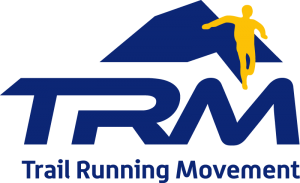Equipment
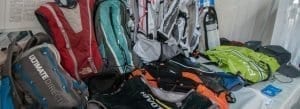
In the practice of Trail Running the choice of good equipment makes the difference and there are some things that cannot be absolutely missing in your gear such as: backpack or bottle belt, trail running poles and goggles to protect your eyes from atmospheric agents.
Backpack vs bottle belt
Backpacks most commonly used are:
- 5 liters capacity, for shorter Trails;
- 7-10 liters capacity for much longer trail competition;
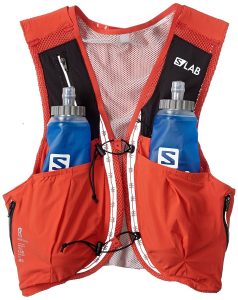
- 10 -15 liters the Ultra or Endurance trail, providing space both for the hydratation system and other equipment.
The different models on sale, could be used with:
- hydro pack (a plastic bag 1 to 3 liters, provided with a hose for drinking);
- flasks or plastic bottles of 0.5-0.8 liters, in front or back pockets, depending on the models.
Since this equipment is used in training and long competitions, it is important to evaluate multiple aspects:
- Weight
- Pockets number and dimension;
- Accessibility to the pockets
- wearability and adherence to the body
- Fabric breathability.
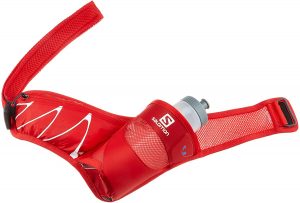 The Bottle belt is lighter then the backpack, has a loading water capacity between 0.5 and 2 liters, but a limited space availability.
The Bottle belt is lighter then the backpack, has a loading water capacity between 0.5 and 2 liters, but a limited space availability.
Recommended for training and competitions lasting no more than 3-4 hours.
TRM Tips for hydro pack (Camelbak)
- Pay attention that it require a continuous use to prevent the bacteria and molds proliferation;
- To avoid the bad taste of the water keep the bag in the freezer;
- Train yourself with the hydro pack, to understand your water need, and avoid to run out of during a training or a race.
For more tips on the different hydratation gears, and how to prepare a backpack for an Ultra, click video or research.
Trail Running Poles
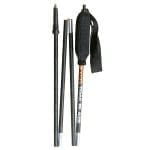 Assuming that the use of Trail Running poles is a personal choice, related to the running style, the level of preparation, the type of terrain, and in some cases even from the competition regulations, however there are opinions agree that in long Trails, and Ultra Trails they offer a definite complementary support that help to preserve the lower limbs and trunk muscles.
Assuming that the use of Trail Running poles is a personal choice, related to the running style, the level of preparation, the type of terrain, and in some cases even from the competition regulations, however there are opinions agree that in long Trails, and Ultra Trails they offer a definite complementary support that help to preserve the lower limbs and trunk muscles.
At the same time they are an efficient support to reduce the load on the joints, during the descent, helping you to reduce impacts and improve balance, especially in case of technical terrains and or particularly steep and slippery ground.
Many researches have shown that during a climb, considering the same ascensional pace, the use of poles gives an energy savings of 20-30%, which is a key factor, especially for an Ultra Trail. The best technique of use, in less steep ascents it does not differ from the ski mountaineering poles, that are to be used in alternating step. When the grade increments, you should put them simultaneously in front of you in order to generate greater thrust force.
Downhill, the poles allow to reduce the weight on the lower limbs and, by executing the “Butterfly” technique, to redistribute it on arms and shoulders.
TRM Tips
- Hold the poles as in ski touring, not wearing the pole straps: downhill when falling they can cause a wirst fracture;
- Practice the technique of use uphill and downhill, otherwise their effectiveness will diminish considerably and, in the case of incorrect use, they may cause joints pain in the upper limbs.
Poles types and how to choose them
From a technical point of view the sticks for Trail Running can be categorized by:
- Construction materials (aluminum, carbon fibers, metal alloy);
- Body design (one-piece, telescopic, in sections);
The material composition of the pole’s body, impact significantly on its technical performance. Take into account that:
- Metal alloys are very strong, but not the lighters;
- Aluminum is light, durable and flexible enough;
Carbon fibers are the lightest, but rigid and with a less resistance to lateral impacts. For example, if you step on a stick lying on the ground it can break.
The uppermost choice criterias, in the purchase of Trail running poles, are:
- the strength as they are subject to high stresses especially going downhill;
- lightness, bearing in mind that they are used mainly in long training runs and Ultra Trails;
- ease in storing them (for telescopic and sectionables poles) both for the rapidity, and the difficulty on doing even the simplest movements, under heavy tireness in long training sessions or competitions;
- ergonomics, to avoid blisters and abrasions from chafing;
- available sizes in order to adapt it them to your height.
TRM Team experience
- The one-piece sticks are definitely more solid, especially downhill, and therefore preferred from heavier athletes, however, they are difficult to be carried and secured to the backpack;
- The telescopic and sectionables can be easily folded and stored inside the backpack, or hand held folded, thus giving the possibility to keep a correct arms movement running uphill, flat, or downhill.
Glasses for Trail Running
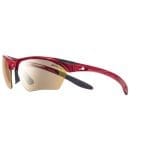 In the mountains the brightness is higher and, therefore, it is necessary to protect your eyes especially at high altitude. The glasses, in addition to protect against UV rays, they are also useful for lower branches, insects and dust.
In the mountains the brightness is higher and, therefore, it is necessary to protect your eyes especially at high altitude. The glasses, in addition to protect against UV rays, they are also useful for lower branches, insects and dust.
Primary criteria to be considered:
- designed for Trail Running
- ergonomic
- lightness
- photochromatic. The transition from level 1 (semi-transparent) to level 3 or 4 (maximum protection) must be fast
TRM Team experience in Ultra, contact lenses versus eyeglasses:
- Contact lenses are very difficult to manage during long runs and races, better opt for eyeglasses;
- Choose a brand that can provide frame and lenses designed for sport use;
- Opt for neutral lenses as they have a better overall performance (day and night) and wear a hat to protect yourself from sun light.
For more info contact our TRM Coaches and Experts: info@trailrunningmovement.com



